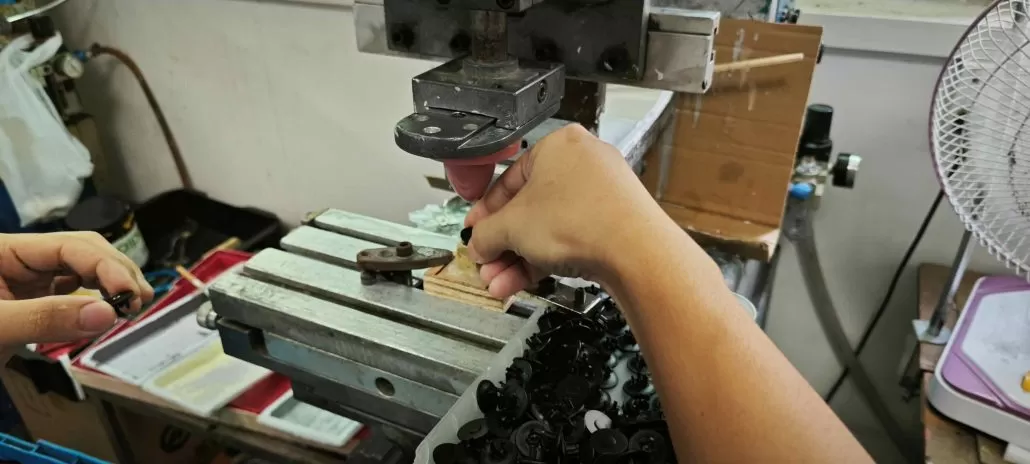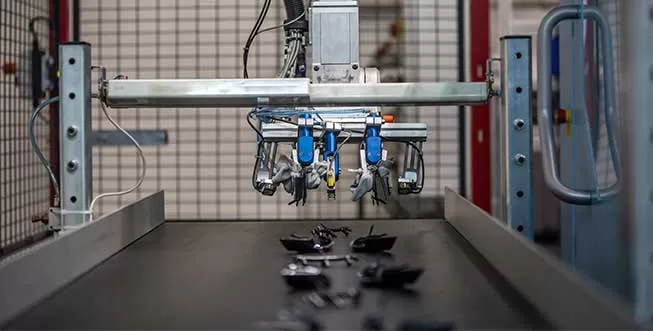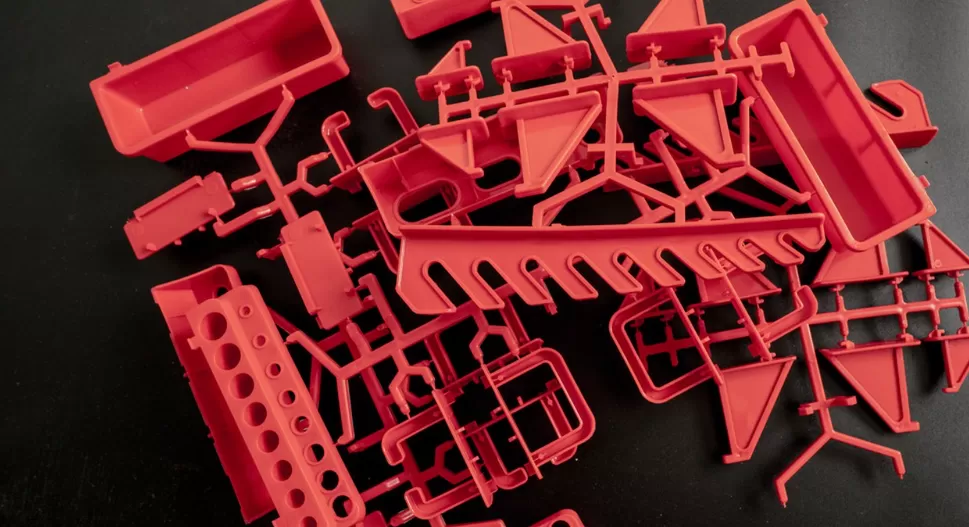Are you finding it challenging to select the right material for your injection molding projects? You’re not alone. This is a common pain point that I’ve seen time and again in my line of work, especially when the project involves custom plastic parts. There’s a dizzying array of plastic materials available, each with its own unique properties, and it can be difficult to know where to start.
The answer to this problem lies in understanding your project requirements, knowing the different materials available, and matching these materials with your needs. Each plastic material has its unique properties that make it suitable for specific applications. Your project’s success will depend heavily on the right material selection.
It’s an important decision that can greatly affect the final product’s quality and functionality. So let’s dive deeper into this topic and ensure you make the right choice for your injection molding material.
What Factors Should Be Considered When Choosing an Injection Molding Material?
The selection of injection molding material is a decision that should be guided by several key factors. You need to consider the part’s application, strength requirements, temperature resistance, aesthetic requirements, and cost-effectiveness of the material.
Each plastic material comes with its strengths and limitations. For instance, polystyrene is great for parts that need high clarity, but it’s not the best for high-impact applications. On the other hand, polypropylene offers excellent chemical resistance and flexibility but may not be suitable for parts that will be exposed to high temperatures.

What Are the Most Common Injection Molding Materials and Their Properties?
Understanding the properties of common injection molding materials can help you determine which one will best meet your project’s requirements. Here are some of the most frequently used materials and their characteristics:
ABS (Acrylonitrile Butadiene Styrene): ABS is a popular material for injection molding due to its high impact resistance, excellent machinability, and good thermal stability. It’s commonly used in products like automotive parts, toys, and electronic enclosures.
Polystyrene (PS): PS is known for its rigidity and crystal clear transparency. It’s often used in products like food packaging and lab equipment.
Polypropylene (PP): PP offers excellent chemical resistance and flexibility. It is commonly used in products like containers, packaging, and automotive parts.
Polyethylene (PE): PE is known for its toughness, flexibility, and low cost. It’s often used in consumer products like plastic bags, bottles, and cutting boards.
How to Match Material Properties to Project Requirements?
When choosing the right injection molding material, you need to align the unique properties of the materials with your project’s requirements. This involves an in-depth understanding of the functionality your product must deliver. Let’s break down this process into more detailed steps.
Identify the Functionality Requirements of the Product
Every product serves a specific purpose, and it’s important to understand what that is. Does the product need to be rigid or flexible? Should it withstand high temperatures or be resistant to chemicals? What kind of physical stress will it undergo? Are there any regulatory standards it needs to comply with? Answering these questions will help define the key functionality requirements of the product.
Understand the Material Properties
After determining your product’s functionality requirements, familiarize yourself with different material properties. As discussed earlier, each material has a unique set of properties that make it ideal for specific applications. For instance, ABS is known for its durability and ease of use, making it a great choice for products that require a high degree of robustness. On the other hand, polypropylene is chemically resistant and flexible, making it perfect for containers and similar products.
Match the Functionality Requirements with Material Properties
Once you have identified both the functionality requirements and the material properties, it’s time to match them up. Suppose your product needs to be chemically resistant. In that case, a material like polypropylene would be a good fit. However, if your product needs to withstand high temperatures, you might want to consider materials like polyether ether ketone (PEEK) or polyphenylene sulfide (PPS). The process of matching requirements with properties will guide you to the most suitable material for your project.

How Can You Ensure Quality and Cost-Effectiveness?
Selecting the right material is not just about meeting the product’s functional requirements. It’s also about ensuring the quality and cost-effectiveness of the production process.
For instance, materials like PEEK and PSU (Polysulfone) might meet your product’s performance requirements, but they are more expensive and challenging to mold than other materials. This is why it’s crucial to weigh the pros and cons of each material, considering not just the performance aspects but also the cost and production considerations.
Here’s how you can achieve this:
Material Quality
The quality of the material directly impacts the quality of the final product. Opting for a high-quality material ensures that your product performs well and lasts longer. Furthermore, high-quality materials are more likely to survive the molding process without issues, reducing waste and saving costs in the long run.
Material Cost
While it’s important to choose a high-quality material, it’s also essential to consider the material’s cost. More expensive materials may offer superior qualities, but they could also inflate your project costs. Therefore, it’s vital to strike a balance between cost and quality. Always consider cost-effective alternatives that meet your quality standards.
Ease of Processing
Some materials are more challenging to work with than others. If a material requires higher temperatures or longer cycle times to process, it may increase your production costs. Consider materials that can be efficiently processed within your project’s time and budget constraints.
Material Availability
The availability of the material is also a factor that can impact both cost and quality. A material that is difficult to source or available in limited quantities may cause production delays and drive up costs.
Project Scale
The scale of your project can influence the cost-effectiveness of a material. For smaller-scale projects, more expensive, high-performance materials may be feasible. However, for large-scale production, a slightly lower-performing but significantly cheaper material may prove more cost-effective.
By considering these factors, you can ensure that the material you choose for your injection molding project will result in a high-quality product while staying within your budget. It’s all about understanding the trade-offs and making informed decisions.

Different Applications, Different Materials
The type of application plays a significant role in determining the choice of material. The intended use of the part heavily influences the material properties required.
High-Strength Applications
For products that need to endure high stress or impact, high-strength materials such as polycarbonate (PC), polyamide (PA or Nylon), or ABS are ideal. These materials offer excellent mechanical properties and find use in automotive components, gears, and other mechanical parts.
High-Temperature Applications
For parts needing to withstand high temperatures, materials like polyether ether ketone (PEEK), polyphenylene sulfide (PPS), or polyethylene terephthalate (PET) are suitable. These are typically used in components for appliances, automotive, and other high-heat environments.
Food Contact Applications
In manufacturing food contact or medical applications, choosing materials that are food-safe or medical-grade is crucial. These include polypropylene (PP), high-density polyethylene (HDPE), and certain grades of polystyrene (PS).
Cost-Sensitive Applications
If cost is a significant factor, materials like polyethylene (PE) and polyvinyl chloride (PVC) are cost-effective and offer good performance for many applications. They’re commonly used in packaging, disposable items, and other high-volume, low-cost products.
Outdoor Applications
For products exposed to UV light or outdoor environments, materials with UV resistance like acrylic or certain grades of polyethylene (PE) and polypropylene (PP) are suitable.
Conclusion
Choosing the right material for your injection molding project can seem daunting, but by understanding your project’s requirements, knowing the properties of different materials, and considering cost and production aspects, you can make an informed decision. Remember, the choice of material can greatly impact your product’s quality, functionality, and cost-effectiveness. So take your time, do your research, and if in doubt, don’t hesitate to seek professional advice.
At Longsheng, we offer tailored solutions that ensure your product’s unique requirements are met, while guaranteeing cost-effectiveness and superior quality. Ready to transform your vision into a high-quality product?
Reach out to us now. Let’s make your idea tangible. Contact Longsheng today for your plastic injection molding needs.
Mobile:+86 185 6675 9667(Gloria Wu)
E-Mail:gloria.wu@longshengmfg.com


